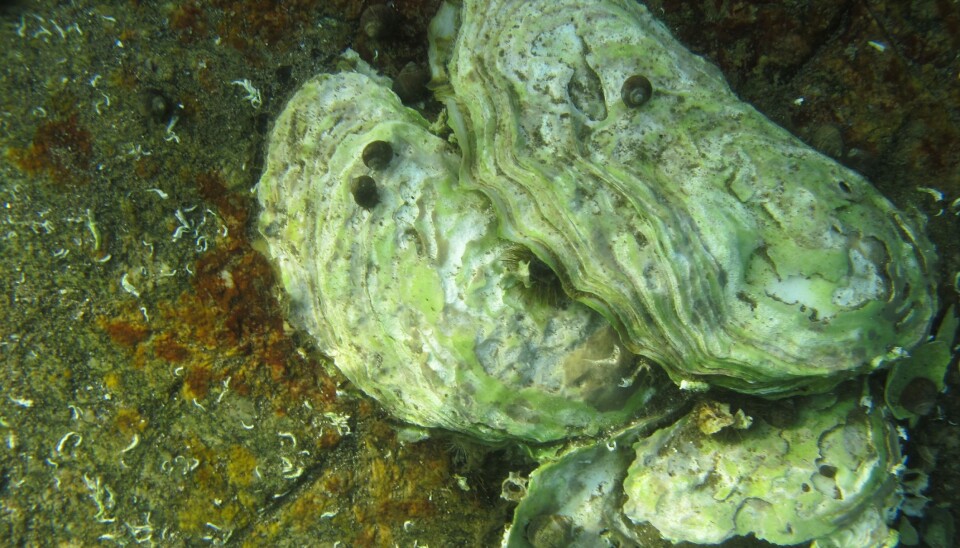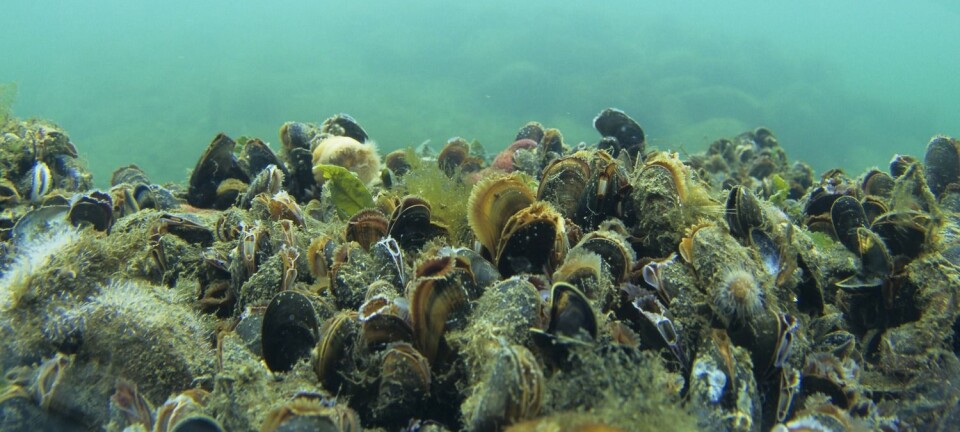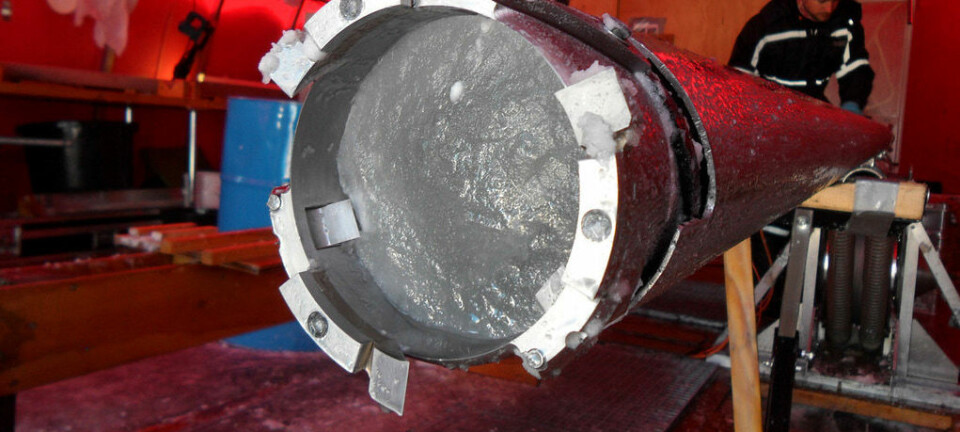An article from NIVA - Norwegian Institute for Water Research

DNA analyses reveal secrets about the Pacific oyster
Is oyster larvae drift across the Skagerrak the cause of wild oysters great increase? New DNA analyses provide insight into the origin of the first wild Norwegian sea oyster populations.
If you plan on chilling along the beaches of Southern Norway this summer, beware of stepping on the sharp edges of the pacific oyster (Crassotrea gigas).
The occurrence of this foreign species has exploded during the last years. From 2012 to 2016 only, the probability of observing pacific oysters in the Oslofjord has increased from 4 to 80 per cent. The pacific oyster from Asia is about to displace native species in the Norwegian waters.
Happiest in the heat
The pacific oyster was introduced to Norway in the 1980´s for aquacultural purposes. The first time it was observed in the wild north of Skagerrak was in Kragerø, Southern Norway, in 2005.
Climate change and increasing ocean temperatures are the main reasons why the pacific oyster suddenly thrives in areas where it used to be too cold; The oyster is picky about temperature in most of its life stages. For maturation and spawning to be completed, temperatures higher than 16-20 degrees are required for several days in a row.
After hatching, the larvae, too, are very sensitive to low temperatures. Therefore, it has been assumed that Skagerrak has functioned as a temperature barrier against the northward spreading of larvae produced off the Swedish and Danish coast. Researchers from The Norwegian Institute for Water Research (NIVA) wanted to investigate this assumption further.
“The spreading of the pacific oyster is aggressive and worrying. There is a need to find the origin of the wild populations, so that the most effective preventive measures can be effectuated,” says senior research scientist Eli Rinde at NIVA.
DNA analyses and ocean current models
Two distinct methods were applied to reveal the origin of the Norwegian populations of pacific oyster: Analyzing the DNA of the oysters, and simulating larvae drift across the Skagerrak, given certain temperature criteria for survival and changes in temperatures since the 1990's.
DNA from a total of 262 oysters collected from four Norwegian, one Swedish, and one Danish locality were analyzed, allowing for genetic comparison. The results revealed the degree of relatedness between the localities.
The larvae drift simulations, on the other hand, indicated the influence of temperature increase on the spreading potential across Skagerrak. The results were recently published in the scientific journal PLoS ONE.
Introduced several times
The Norwegian localities were Espevik in Western Norway, southern Grimstad and Inner & Outer Oslofjord (Sætre and Tjøme). According to the simulation model, Tjøme was most highly exposed to receiving oyster larvae from the south. This surprised the research team when comparing with the results from the DNA analyses, senior research scientist Marc Anglès d’Auriac, says:
“According to the simulation model, Tjøme is a hot spot for receiving oyster larvae from Sweden and Denmark. However, the genetic analyses showed that Tjøme oyster genes were significantly different from the genetic material of Swedish and Danish oysters.
In other words, the Tjøme oysters we investigated are not established via larvae drift from our neighbor countries,” Anglès d’Auriac explains.
A complex picture
The Tjøme oyster was not the only one to have a characteristic genetic profile. The Espevik oyster genes were even more distinct from the other groups, whereas the oysters from Grimstad and Sætre were sufficiently genetically similar to be regarded as one single group. The same applied for the oysters from Sweden and Denmark.
“The results indicate that the pacific oyster has been introduced to the Norwegian coast several times, and that the oysters have different origin,” Anglès d’Auriac says.
According to the simulation model, the summers of 2002 and 2006 were sufficiently warm for the larvae to survive across Skagerrak. But the NIVA researchers think there are several other factors that limit the larvae survival.
“The oyster larvae are probably at risk both for predation and starvation on their way across Skagerrak, and they may have problems surviving the long journey. Since the gene material of several of the Norwegian populations were so different from the Swedish/Danish, the individuals we investigated do not origin from drifting larvae,” Rinde says.
Which measures can be taken?
If the explosive increase of the Norwegian oyster populations is caused by locally produced larvae, reducing the density might be an efficient measure: simply pick and remove the oyster from production areas.
But as temperatures increase, chances to survive across Skagerrak also increase, and oyster harvest might not be as efficient.
There is a need for further investigations and analyses to reveal to which extent the current explosive spread along the Norwegian coast is due to drifting Swedish and Danish larvae. More gene analyses of the newly established populations will be an essential part of this work.


































